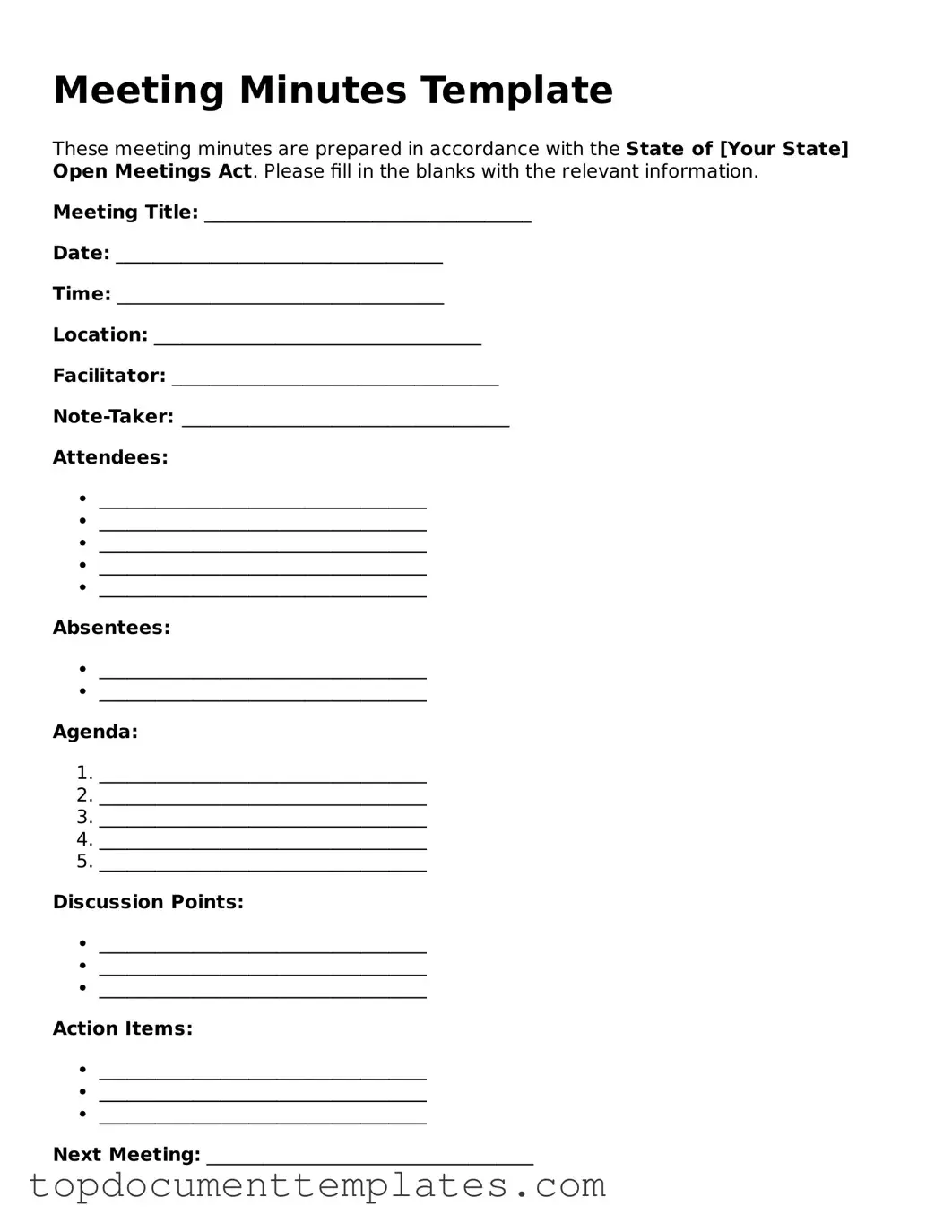Meeting minutes play a crucial role in the documentation of discussions and decisions made during gatherings, whether they are formal board meetings or casual team huddles. This essential form captures key details such as the date, time, and location of the meeting, along with a list of attendees and absentees. It provides a structured outline of the agenda items discussed, highlighting the main topics, decisions reached, and any actions assigned to participants. Additionally, the minutes often include a summary of discussions, ensuring that all voices are represented and that important points are not overlooked. By maintaining a clear record, meeting minutes foster accountability and transparency, allowing members to refer back to previous discussions and follow up on tasks. The form is not merely a bureaucratic requirement; it serves as a valuable tool for enhancing communication and collaboration within organizations.
